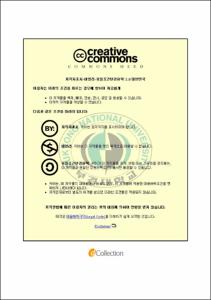한·일 초등국어교과서의 의음어·의태어 대조연구
- Alternative Title
- The Study on Comparison of an Onomatopoeic Word and a Mimetic Word in Korea and Japan Primary School Textbook : By Form and Meaning Point of View
- Abstract
- From ancient times Korea and Japan have had many things in common geographically and culturally, so a lot of Koreans think that they have an advantage over other foreigners in learning the Japanese language. However, at some point during the course of studying Japanese, if they encounter difficult times when they can not solve problems just by using vocabularies and grammar they mastered, they feel frustration. It will be especially so and acute when they study onomatopoeic words and mimetic words which have the characteristics of allowing sensuous and personal expressions widely that are not used in the Korean language.
As such, this paper tries to investigate the numbers of onomatopoeic words and mimetic words which appear in the Korean language textbook of the Korean elementary school and the Japanese language textbook of the Japanese elementary school, and classifies them morphologically and semantically in order to compare and research the characteristics of both languages to help learners of Korean or Japanese expand their vocabularies and to lay a foundation for my future research.
The result has revealed that on the bases of both languages' morphological characteristics of the beat and syllable, the Japanese language shows that the types of XYXY and XtYr occupy more than half of the appearances, and in contrast the Korean language shows that the types of XY, XYXY and XX demonstrate a high frequency of appearances and at the same time demonstrate more than two times of the vocabulary volume of Japanese counterpart. In the semantic aspect, I was able to look at the peculiarities in changes of word feelings through alternation of consonants, vowels and syllables, the differences due to both countries' cultures and customs, and the problems in translations.
It is feared that as the Korean onomatopoeic words and mimetic words are more than double the Japanese counterparts, learners of Korean may feel some burden although they may learn the affluent word feelings of the Korean language. Anyway, I plan to expand the scope of my future study objets as the current study was limited to the investigation of elementary schools' Korean and Japanese textbooks.
- Issued Date
- 2007
- Awarded Date
- 2007. 8
- Type
- Dissertation
- Keyword
- 초등국어 의음어 의태어 Onomatopoeic Word Mimetic Word
- Publisher
- 부경대학교 교육대학원
- Alternative Author(s)
- Hong, Mi-Ja
- Affiliation
- 부경대학교 교육대학원
- Department
- 교육대학원 일어교육전공
- Advisor
- 박영숙
- Table Of Contents
- Ⅰ. 서론 = 1
1. 연구목적 = 1
2. 선행연구 = 2
Ⅱ. 본론 = 11
1. 의음어·의태어 정의 = 11
1-1. 일본어의 사전적 정의 = 12
1-2. 한국어의 사전적 정의 = 14
2. 한·일 양국어의 의음어·의태어 = 14
2-1. 형태적 측면 = 15
2-1-1. 일본소학교의 경우(天沼寧) = 17
2-1-2. 한국초등학교의 경우 = 25
2-1-3. 양국의 비교 고찰 = 31
2-2. 의미적 측면 = 38
2-2-1. 일본소학교의 경우 = 40
2-2-2. 한국초등학교의 경우 = 42
2-2-3. 양국의 의음어·의태어 사용 용례 = 44
2-2-4. 양국의 비교 고찰 = 53
Ⅲ. 결론 = 62
參考文獻 = 68
부록 = 70
- Degree
- Master
- Files in This Item:
-
-
Download
 한·일 초등국어교과서의 의음어·의태어 대조연구.pdf
기타 데이터 / 1.85 MB / Adobe PDF
한·일 초등국어교과서의 의음어·의태어 대조연구.pdf
기타 데이터 / 1.85 MB / Adobe PDF
-
Items in Repository are protected by copyright, with all rights reserved, unless otherwise indicated.